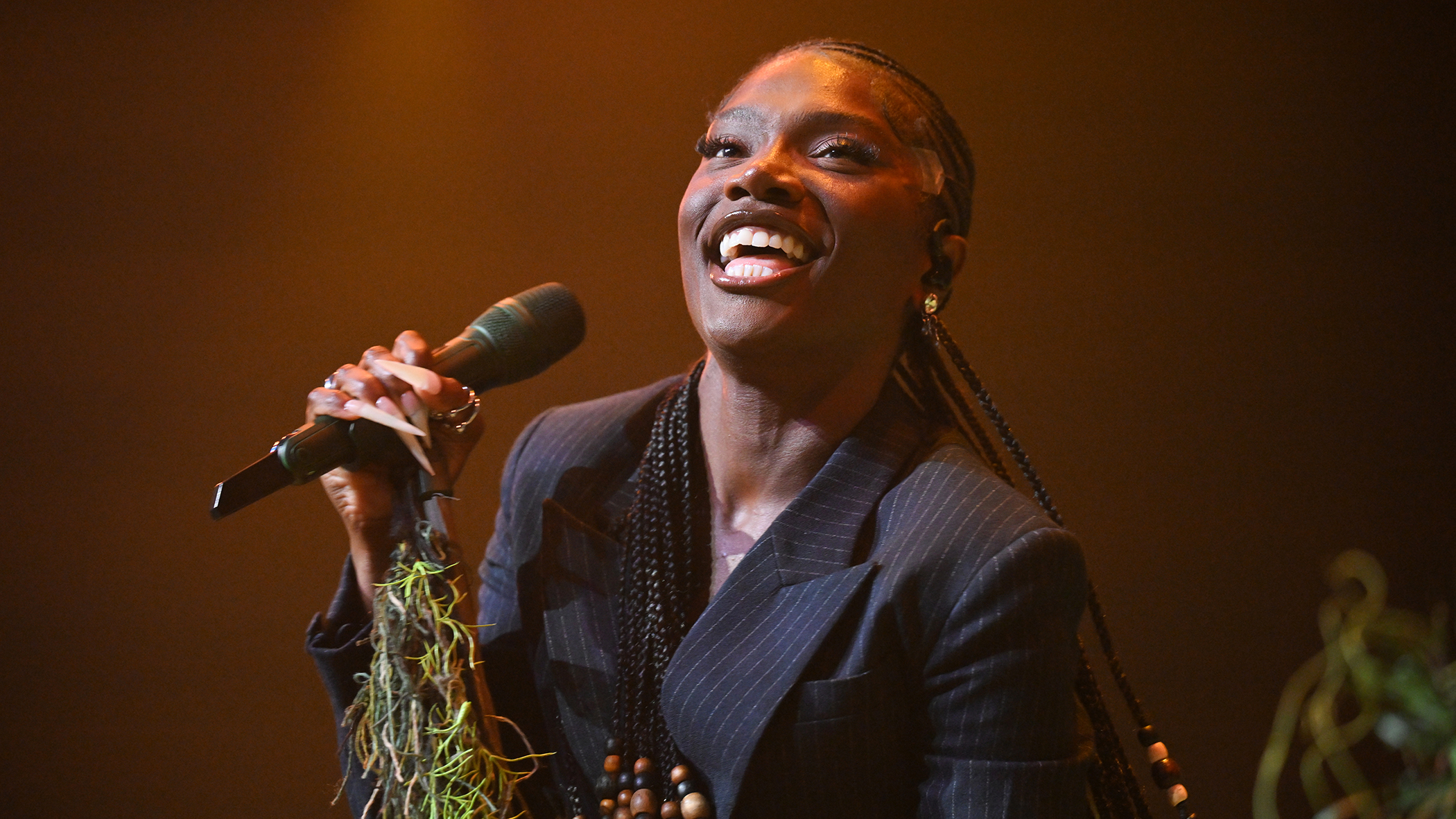"This makes no sense at all in terms of functional harmony. So why does it sound so good?: A music professor breaks down Doechii's Denial Is a River and Boiled Peanuts
Following the rap phenom's Grammy win for Best Rap Album, our resident music professor puts two of Doechii's best songs under the musical microscope

Ever since Doechii won the Grammy award for Best Rap Album, my socials have been saturated with her. I am very far outside her target audience, but when even my fellow middle-aged dads are this excited about an artist, you know that she must be having a moment.
I am not qualified to explain Doechii’s unique place in the hip-hop landscape. For that, I recommend Craig Jenkins’ profile on Vulture. What I can do is recommend that you watch her recent performance on The Late Show with Stephen Colbert, embedded above.
This is fresh and immaculate, and I was stunned to learn that it was Doechii’s first time doing her own choreography, and that she put it all together in four days. I guess this is why all the press about her mentions her hyper-intense work ethic. Doechii worked with hair artist Malcolm Marquez. She cites Solange, artist Carlota Guerrero and hip-hop legend MF DOOM as inspiration.
The Colbert performance is a medley of two thematically-related songs from Doechii’s mixtape Alligator Bites Never Heal. Yes, it’s a mixtape, even though she won Best Rap Album for it. You may wonder what the difference even is between a mixtape and an album at this point.
I am old enough to remember when mixtapes were cassettes, but now the word denotes an album with a casual vibe that's sometimes given away for free. In Doechii’s case, this means that the songs are short and fragmentary, sometimes seeming like sketches. Presumably her first “official” album will be structured more conventionally.
The performance begins with a narrator reciting quotes from a 2012 interview with MF DOOM about why he wears a mask. There’s another MF DOOM quote between the two songs, and a third at the end.
Boiled Peanuts
The first song in the medley, Boiled Peanuts, is built on a samples of Jano’s Revenge by Los Sospechos.
Want all the hottest music and gear news, reviews, deals, features and more, direct to your inbox? Sign up here.
Rap producers have embraced Phrygian, possibly because of its Hollywood associations
The track alternates Bm and C chords, implying B Phrygian mode. This scale traditionally evokes Iberian or Arabic music, and lazy Hollywood film composers have routinely used it as shorthand for evil, darkness, or the exotic. Rap producers have embraced Phrygian, possibly because of its Hollywood associations. You can hear it in Doo Wop (That Thing) by Lauryn Hill, Get Ur Freak On by Missy Elliott, Versace by Migos, and many other songs.
The beat is a medium-slow boom-bap groove, meaning that it’s a funk pattern with just enough sixteenth-note swing to feel organic. The jazzy horns on the sample also evoke the boom-bap era. Doechii’s music is stylistically diverse, but this is the side of her that appeals the most to my fellow 90s kids.
Speaking of the 90s, The Tiny Desk version of Boiled Peanuts interpolates the horn sample from Rebirth of Slick (Cool Like Dat) by Digable Planets. That horn sample, in turn, comes from Stretching by Art Blakey and the Jazz Messengers.
Denial Is a River
The second half of the medley is Denial is a River. The instrumental is labeled as “an MF DOOM type beat” by Ian James - perhaps this is what motivated to Doechii to quote the DOOM interview.
This track is also in B minor, and it also uses chromatic bass movement. But unlike Boiled Peanuts, there is no traditional key or mode that it fits into. Ian James took a B minor chord and transposed it down by seemingly arbitrary amounts. (I assume he did this with a sampler, but he could just as well have done it with DAW automation.) The resulting chord progression is Bm, Bbm, Bm, Am, Abm. This makes no sense at all in functional harmony terms. So why does it sound good? It’s a profound music-theoretical mystery.
People don’t usually think of hip-hop as a source of harmonic inspiration. Rhythm, yes; timbre, absolutely; but harmony isn’t typically the central focus in a hip-hop track. However, I learned a very important harmonic concept from my own attempts to produce hip-hop: if you have a satisfying beat, anything you put on top of it will sound intentional and “correct.”
This kind of odd-length phrasing and asymmetry is unusual, and that makes it ear-grabbing
You can try this yourself. Put on a looped breakbeat and try playing random chords on top of it. You can pull roots and chord qualities out of a hat, or just record yourself mashing your fist on a piano. It won’t take many repetitions before your chords start sounding acceptable, and then they will start sounding great. It might take four repeats if it’s an unconventional progression; it might take more if it’s just random note clusters; but it will absolutely work. This is true of anything, by the way: clips of speech, samples of environmental or found sounds, pieces of high modernist atonal music or musique concrete; hip-hop beats legitimize all of it.
Anyway, I want to point out a particular line from Denial is a River, using the radio-friendly lyrics from the Colbert performance rather than the more explicit original ones: “Now he think he slicked back 'til I slipped back, got my lick back, turned the dude to a knick-knack.” Up until this point, Doechii’s flow has been streams of sixteenth notes, organized into familiar patterns, but this line disrupts the flow. The accented/rhymed syllables are spaced every three eighth notes until “knick-knack”, which comes after five eighth notes. This kind of odd-length phrasing and asymmetry is unusual, and that makes it ear-grabbing.
The next line is rhythmically more straightforward, but listen to the pitch, it’s a distinct descending melody: “I moved on, dropped a couple of songs, and then I went and got signed, now it's 2021.” It’s a cliche to say that rap is unpitched, or that it’s on a monotone, but neither of these are true. Every time you utter a vowel, it has a distinct pitch, though that pitch might swoop up and down a lot. Rappers may not control their pitch as tightly as they control their timing, but pitch still matters.
Rappers may not control their pitch as tightly as they control their timing, but pitch still matters
The importance of pitch in rap flows is easy to demonstrate to yourself. Take a rap line that you know well and say it with the wrong pitches: go up when you’re supposed to go down and vice versa, or stay on the same pitch when you’re supposed to move and vice versa. Very often, the stereotypical “white rapper” voice is annoying because it uses the wrong pitches.
But wait, you might ask. If rap has structured pitch, what makes it different from singing? I would say: not much. But if all vowels are pitched, doesn’t that make all speech a kind of singing too? To answer that, we would have to define what “singing” is more clearly, and that is beyond the scope of this column. But all speech does have a strong component of musicality to it; that’s how we convey emotion, among many other things. Diana Deutsch discovered the Speech-to-Song Illusion in 1995, in which she transforms ordinary speech into a song simply by repeating it. This 12tone video explains it well.
Doechii has some other memorable speech-like melodies in Denial is a River, or melody-like speeches. Listen to the descending pitches on the line “Mmm, nah, whatever”, and the way she uses pitch to highlight the word “like” in “I like pills, I like drugs”. This line is full of gaps where the explicit language would go, and I actually like the effect of the gaps, it only enhances the off-kilter flow. Even Doechii’s heavy breathing at the end of the song is melodic.
Finally, one last nod to the 90s: the line “I ain’t a killer but don’t push me” is a 2Pac quote.
More Doechii
The hook to Catfish from Swamp Sessions has a string of rhymes that’s MF-DOOM-worthy: Doechii rhymes "hoorah", "too fly", "Ventura", "jeweler", "medulla", "schooled her", "chulas" and "ruler".
NISSAN ALTIMA from Alligator Bites is breathtakingly filthy, but if that doesn’t faze you, it’s a remarkable display of MC skills. Doechii tends to repeat a phrase from the end of a line at the beginning of the next line: “I'm the new hip-hop Madonna/I'm the new hip-hop Madonna”. Not only is the rhythmic placement of the repeat different, but the pitch contour is different too. Nice technique.
Given the wild eclecticism of Doechii’s music so far, I can only guess what she will come up with next. I look forward to finding out.
Ethan Hein has a PhD in music education from New York University. He teaches music education, technology, theory and songwriting at NYU, The New School, Montclair State University, and Western Illinois University. As a founding member of the NYU Music Experience Design Lab, Ethan has taken a leadership role in the development of online tools for music learning and expression, most notably the Groove Pizza. Together with Will Kuhn, he is the co-author of Electronic Music School: a Contemporary Approach to Teaching Musical Creativity, published in 2021 by Oxford University Press. Read his full CV here.

![[SOLD] MF DOOM Type Beat -](https://img.youtube.com/vi/HdDYcJqnX_Y/maxresdefault.jpg)



